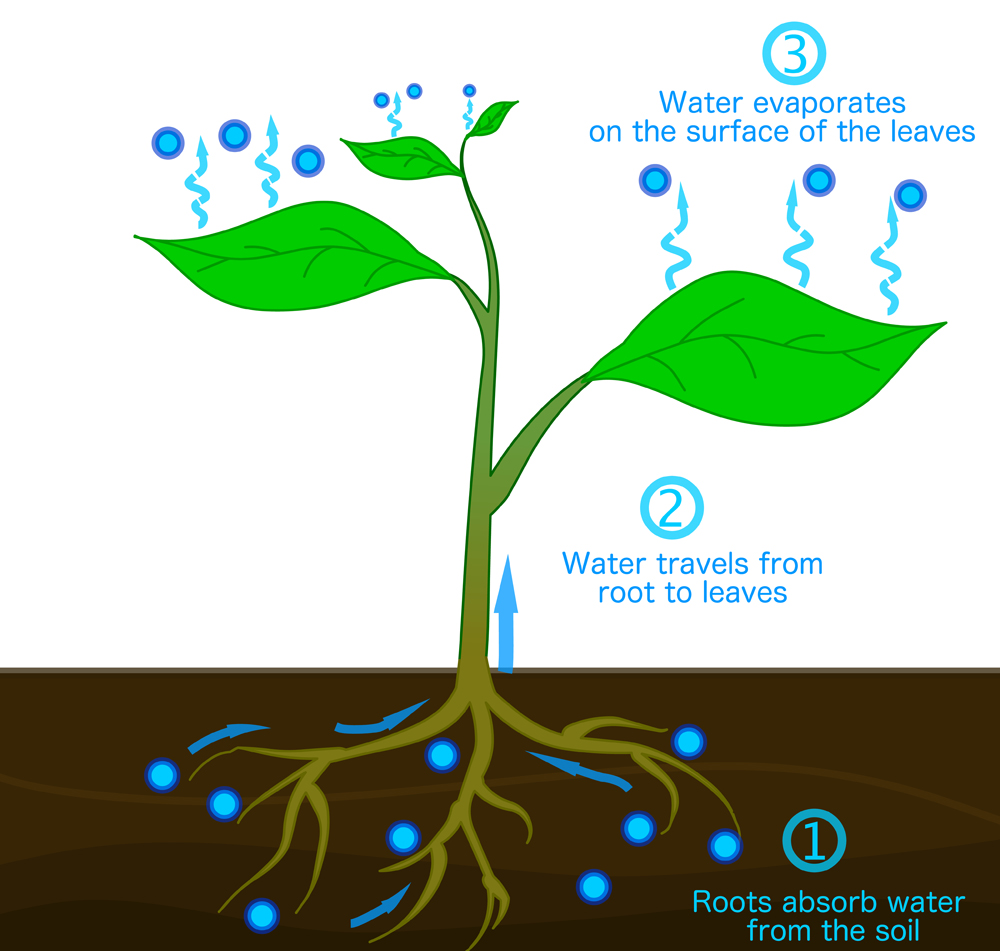Plants positively affect our health by increasing the amount of oxygen in the air, and purifying the air. Plants also cool the surrounding air through transpiration. Being surrounded by plants also reduces stress and some studies have found that it increases productivity.
Have you ever had one of those tough days at work where your computer is overwhelmed with countless Excel sheets that need to be handled? The stress of tight deadlines gets heavier with every hour, it seems. However, you catch a glimpse of a shady tree outside your office window and you feel inclined to breathe a sigh of relief.
The natural world, even for an instant, helps to calm you down, at least enough to get through the day.
If you’re wondering what magical effect plants could possibly have on us, this article has everything you need to know about how plants affect humans and our surroundings.
Plants Can Act As Air Purifiers And Air Coolers
We are well aware that the air we breathe is filled with important gases (see: oxygen). However, it’s also filled with other gases and dust suspended in the air that are considered “pollutants”. Indoors—in our homes, offices, and schools—furniture and other items often release these suspended particles, volatile organic chemicals (VOCs), and other similar pollutants. This decreases the Indoor Air Quality (IAQ), as these particles act as respiratory irritants, toxicants, and are the major causes of allergies.
Plants can improve the quality of air in two ways. First of all, plants perform photosynthesis, wherein they take up carbon dioxide and release oxygen back into the atmosphere. This is why a walk in the park leaves you feeling refreshed, as not only are the plants taking up carbon dioxide, but they’re also releasing oxygen. Higher concentrations of oxygen are seen to enhance cognitive performance areas, including memory, visuospatial perception and verbal understanding.
Along with releasing O2, photosynthesis occurring in the leaves of the plants leads to the production of Negative Air Ions (NAIs). NAIs play a crucial role in absorbing suspended particulate matter and thereby purify the air. However, very small amounts of NAIs are generated by indoor plants, so their effect is limited.
An indoor plant at your home or office does exactly the same thing. Plants can absorb and lower the levels of toxic volatile organic chemicals (VOCs) by almost 35%.
This explains why houses situated near green spaces, such as parks, gardens or dense tree cover, experience cleaner and better air quality. Efforts are currently being made to maximize indoor plants’ ability to release more O2 and NAIs in order to improve the air that we breathe every day. Research is ongoing to optimize this relationship.
Also Read: Do Plants Next To Roads Absorb Pollution And Become Harmful?
Plants As Air Coolers And Humidifiers
Plants also help in thermoregulation and act as natural humidifiers, thanks to the process of transpiration. Transpiration is defined as the process of water movement through the plant, and its evaporation from aerial parts (leaves, stem, flowers containing stomata) of the plant in the form of water vapor. As water vapor is released, it reduces overheating and cools the region surrounding the plant.
Thus, transpiration helps in cooling the temperature around the plant. This also helps to increase the moisture content in the atmosphere. High transpiration rates lead to more cooling around the plant’s surfaces. Evidence shows that green facades on buildings resulted in a significant drop in temperature and reduced the heat load on the building.

Plants Help Reduce Stress
Plants also help in reducing physiological and psychological stress. They do this by acting on the sympathetic division of the autonomic nervous system (ANS). The sympathetic division activates what we commonly know as ‘fight or flight’ responses.
Under stressful conditions, the sympathetic division of the ANS is activated, which leads to a series of actions like elevated blood pressure, increased heart rate, increased sweating, and pupil dilatation. Plants affect the ANS by suppressing actions of the sympathetic division, thus reducing the negative effects on the body caused by stress.
Also Read: Do Plants Feel Stress?
Plants Help Boost Cognitive Ability And Creativity
Plants are also known to have an effect on individuals’ cognitive abilities, specifically in terms of creative and problem-solving skills. According to a study conducted at Exeter University, UK, indoor plants improved concentration, along with increasing staff productivity and overall well-being at work. Exposing children to activities associated with plants and trees is known to increase their concentration abilities and memory retention.
Role Of Plants In Healing
Plants are generally seen to have an overall positive effect on individuals. The beneficial attributes of plants have led us to use plants in various medical healing processes. A medical study by Roger Ulrich showed that patients who could see trees from their windows healed faster and required less medication post-surgery than patients whose windows faced a brick wall.
Medical science is incorporating more green interactions to promote the wholesome healing of patients. ‘Horticulture Therapy’ is an intervention that involves engaging an individual in gardening and plant-associated activities to achieve therapeutic goals. It is believed that horticulture activities may have a positive effect on cognitive abilities and brain volume in the hippocampus, thus reducing the risk of cognitive impairment and depression.
Horticulture Therapy is prescribed to those with cases of diagnosed emotional illness, chronic mental conditions, as well as physical disabilities. This intervention has resulted in pain alleviation, attention improvement, reduction in stress, and a lower need for medications, especially in older patients.

The soil in which plants grow have bacteria that might even alleviate inflammation
If you take a walk in the park, then you’re in for an even bigger treat, as not only plants, but also the soil that holds them, is known to have a beneficial effect on relieving stress. Soil contains a bacterium called Mycobacterium vaccae. This bacterium produces a fatty acid that acts against inflammation and reduces stress. The mechanism of this action still remains unclear. Studies show that when rodents were injected with M. vaccae, the bacterium had a similar effect on the brain to that of antidepressants.

Thus, it is believed that the soil bacterium helps by acting as a natural antidepressant, exhibits a long-lasting anti-inflammatory effect on the brain, and elevates one’s mood by secreting cytokines. Cytokines are molecules produced and secreted by immune cells that interact with various other molecules to execute bodily functions. One such target of cytokines is the hormone ‘serotonin’, which imparts a feeling of well-being and happiness.
Conclusion
Since time immemorial, we have known that plants and trees are useful to human life. Owing to our often sedentary modern lifestyle, many of us spend more time indoors than out in the open. Due to this, we miss out on so many rewarding interactions with plants! However, keeping in mind that plants not only affect our environment, but also our bodies and minds, we should try our best to increase our interactions with green settings.
The easiest way to do this is to bring home a few plants, care for them, and make your own space a bit greener—and healthier!
Also Read: Do Plants And Trees Sleep?
How well do you understand the article above!

References (click to expand)
- Deng, L., & Deng, Q. (2018, November 1). The basic roles of indoor plants in human health and comfort. Environmental Science and Pollution Research. Springer Science and Business Media LLC.
- Wolf, K. L., & Robbins, A. S. T. (2015, May). Metro Nature, Environmental Health, and Economic Value. Environmental Health Perspectives. Environmental Health Perspectives.
- Nieuwenhuis, M., Knight, C., Postmes, T., & Haslam, S. A. (2014). The relative benefits of green versus lean office space: Three field experiments. Journal of Experimental Psychology: Applied. American Psychological Association (APA).
- Lee, M.-. sun ., Lee, J., Park, B.-J., & Miyazaki, Y. (2015, April 28). Interaction with indoor plants may reduce psychological and physiological stress by suppressing autonomic nervous system activity in young adults: a randomized crossover study. Journal of Physiological Anthropology. Springer Science and Business Media LLC.
